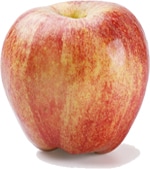Fruit Consumption by Youth in the United States
Posted on by A new study in the October 2015 Pediatrics, “Fruit Consumption by Youth in the United States,” (published online Sept. 21) looks at what fruits—and fruit juices—children are most likely to eat.
A new study in the October 2015 Pediatrics, “Fruit Consumption by Youth in the United States,” (published online Sept. 21) looks at what fruits—and fruit juices—children are most likely to eat.
The study used data from the National Health and Nutrition Examination Survey, 2011 to 2012. Using the Food Patterns Equivalents Database and the What We Eat in America 150 food groups, the study calculated the contribution of whole fruit, 100% fruit juices, mixed fruit dishes, and 12 discrete fruit and fruit juices to total fruit consumption. The study also examined differences by age, gender, race and Hispanic origin, and poverty status.
Key Findings from the Report:
- Nearly 90% of total fruit intake came from whole fruits (53%) and 100% fruit juices (34%) among youth aged 2 to 19 years. Apples, apple juice, citrus juice, and bananas were responsible for almost half of total fruit consumption.
- Apples accounted for 18.9% of fruit intake. Differences by age were predominately between youth aged 2 to 5 years and 6 to 11 years. For example, apples contributed a larger percentage of total fruit intake among youth 6 to 11 years old (22.4%) than among youth 2 to 5 years old (14.6%), but apple juice contributed a smaller percentage (8.8% vs 16.8%).
- There were differences by race and Hispanic origin in intake of citrus fruits, berries, melons, dried fruit, and citrus juices and other fruit juices.
Categories Uncategorized
Page last reviewed: September 21, 2015
Page last updated: September 21, 2015
Content source:
CDC, National Center for Health Statistics